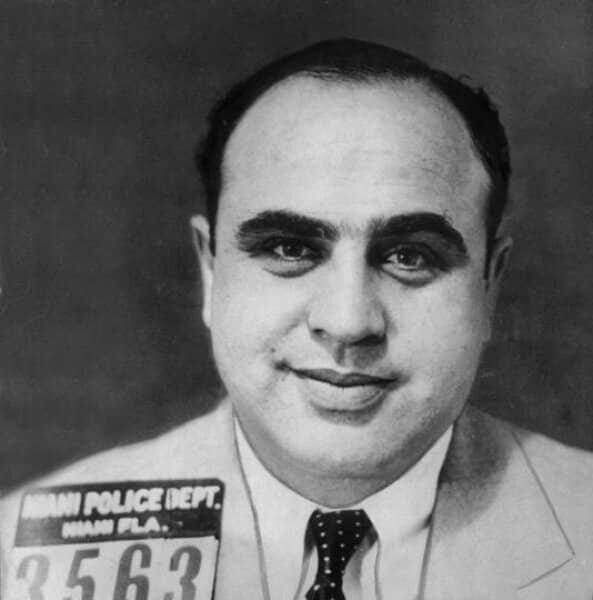Feat of the Week: Tommy Gun Repair
Welcome to our weekly blog post! Each “Feat of the Week” features firearm(s) we have worked on recently. These are showcases of our repair work, custom machining, Cerakote, or a combination of services. We are excited to share our gunsmithing feats with you!
This week’s gunsmithing feat is a Tommy Gun with repair needs. Much like its issues during World War Two, there was a feeding problem with the magazines. Despite its widespread use in WWII, this gun rose to prominence not as a weapon of war but as a gangster’s gun. We can’t wait to share with you the story of this infamous firearm. So let’s get started!
Tommy Gun Repair
The Tommy Gun
One of our customers checked this Tommy Gun into us for repair. He said it wouldn’t feed. Guns which come to us for repair services usually have one of the following issues: failure to feed, fire, eject, or extract. Depending on the issue, I go through a diagnostic process starting with the most likely culprit.
With this gun, I had a hunch that it was an issue with the magazine. Tommy Guns—especially with the drum mags—are notorious for feeding problems. Proceeding with that diagnosis, I filed down each magazine to fit better with the magazine catch.
In order to see if that was, in fact, the proper diagnosis and solution, I headed up to Albany Rifle and Pistol Club to test fire the gun. This is probably one of my favorite parts of being a gunsmith. Each gun that undergoes repair services requires a test fire in order to ensure that the gun functions properly before I return it to the customer.
As the only full service gunsmith in the area, I get to do some really fun test fires. Anything from Desert Eagles to 1919s. MG42s to $20,000 shotguns. And this Tommy Gun.
On the first try, it didn’t work. Sometimes this happens and I have to make final adjustments to the gun before it will fire. So, while at the range, I finagled with it a little more. And, voila! It worked! The gun started to feed and work beautifully.
While it might not have been the most interesting repair job, this gun was surely fun to test fire and has an interesting history. Wielded by the likes of Bonnie and Clyde and Al Capone and his mobsters, the Thompson Submachine Gun is legendary. It was made for the trenches but made infamous by criminals.
The trench broom
The Tommy Gun is named after one of its creators John T Thompson. Thompson, before inventing the Drum Gun, was the chief of the Small Arms Division of the Ordnance Department and later the head consulting engineering at Remington. Upon witnessing trench warfare, he set out to solve the problem of deadlock by inventing an automatic rifle for soldiers to carry.
So, in 1916, Thompson started the Auto-Ordnance Company—with financing by Thomas F Ryan—to create such a weapon, a “Trench Broom.” Along with Theodore Eickhoff, Oscar Payne and George Goll, Thompson designed and developed the “Annihilator” chambered in .45 ACP—same as the M1911.
The gun was finalized in 1918, but the war concluded before it saw any action. The end of the war meant few military sales so the Auto-Ordnance Company shifted their focus and changed their marketing scheme. They began advertising to civilians and the police.
They promoted it as a “gun for the home” to the citizens and as an “anti-bandit” gun for the police. Ironically, the company whose motto was “On the Side of Law and Order” was responsible for producing one of the most notorious weapons used by the gangsters in the prohibition era.
The Street Sweeper
Known as the gun that made the twenties roar, the Thompson was often found in the hands of mobsters. During this time, the submachine gun earned other nicknames such as the “Street Sweeper” and the “Chicago Typewriter.”
The event that brought the Thompson to infamy was the St. Valentine’s Day Massacre in 1929 when Al Capone’s men allegedly killed five opposing mobsters and two associates. Four men dressed like policemen—presumably from Al Capone’s Italian South Side Gang—lined up and executed members of Chicago’s Irish North Side Gang with two Tommy Guns.
These murders brought the Thompson SMG into the public eye and many began calling for gun control. In 1934, after five more years of the police being out gunned by organized crime syndicates, Congress passed the National Firearms Act. This law—still in effect today—prevents civilians from owning fully automatic firearms unless they pay a tax and register their weapons with the ATF. It also restricts the transfer and transport of certain firearms including machine guns, short barreled rifles, and short barreled machine guns.
The Thompson SMG M1A1
At the start of World War Two, newer versions of the Thompson were adopted by the U.S. military and other allied troops. On European battlefields, paratroopers and Ranger battalions typically used the SMG as it was used more often by special operation troops than infantry. The Thompson was also used by American troops by jungle patrols in the Pacific Theater.
These versions of the Thompson had an average rate of fire of 600 or 800 rounds per minute—half that of the early versions with a rate of 1,200 rpm. But still, despite the reduction in fire rate, this SMG was tough to keep on target, and many found issues with its accuracy past fifty yards.
The high rate of fire, however, did make it useful for ambushes. Yet many complained about its lack of penetrating power and heavy weight—come in at ten pounds without ammunition.
Not to mention there were reliability issues—especially feeding and jamming issues with the infamous drum mag. Thus, most military units ditched the drum magazine and opted for the box magazines instead.
Because of these various issues, production of the Thompson SMG ceased in 1944. Despite all of the issues, its use in World War Two was widespread with a total of 1.5 million produced.
Thompson died before seeing his creation make a difference in World War Two. On his deathbed, he expressed regrets that his gun had been “stolen by evil men” and “used for purposes outside” their motto of law and order. Indeed, history remembers this gun less for its intention to disrupt trench warfare in World War One and its contributions in World War Two. Instead, people remember the Tommy Gun as a romantic and glamorized accessory used by criminals and mobsters.
NEXT UP
We hope you enjoyed this week’s gunsmithing feat. Thank you for following along! We are taking a break to spend time with family for Thanksgiving so our next feature will be posted Monday, December 7th at 9am. Comment for any content you want to see.
If you loved the services you saw today, check out our online store! You can start shopping by clicking here. Or drop us a message here. And don’t forget to follow us on social media! We look forward to meeting you and gunsmithing for you
Sources:
https://www.popularmechanics.com/military/weapons/a25414/tommy-gun-thompson-submachine/
https://explorekyhistory.ky.gov/items/show/540
https://en.wikipedia.org/wiki/Thompson_submachine_gun
https://en.wikipedia.org/wiki/Saint_Valentine%27s_Day_Massacre
https://en.wikipedia.org/wiki/National_Firearms_Act
https://www.brown.edu/Departments/Joukowsky_Institute/courses/13things/7421.html




